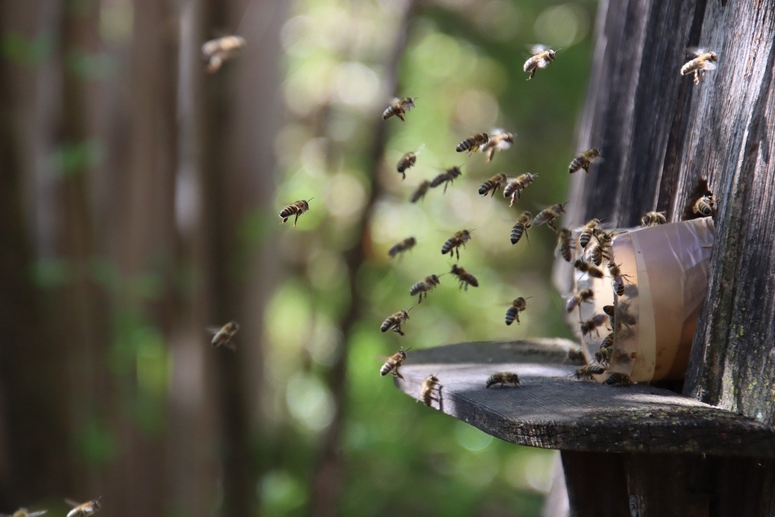Why Monitoring Bees is Key to Understanding Your Land’s Biodiversity Health
Understanding Bee Population Trends The latest UK biodiversity indicators reveal concerning trends in our pollinator populations, with a 24% overall…

Understanding Bee Population Trends
The latest UK biodiversity indicators reveal concerning trends in our pollinator populations, with a 24% overall decline in distribution since 1980. Britain has lost 97% of our flower-rich grassland around the same time. The fact is that 8 out of 10 wild plants in Britain depend on insects for pollination. The connection here is obvious. Bees are a keystone species having an irreplaceable place in the ecosystem. A good thing is that wild bees show more resilient patterns because of their adaptability, they have shown 18% increase in distribution over the same period. Making it a no brainer that we need to monitor and protect them..
The Power of Acoustic Monitoring
Modern technology like the Polly 2.5 device offers continuous, real-time monitoring of pollinator activity through advanced bioacoustic sensors. This solar-powered system captures vital environmental data including temperature, humidity, and light intensity in addition to the pollinator presence, providing land managers with site-level contextual data with pollinator activity to make actionable insights. Compared to manual observation, camera surveillance and trapping, bioacoustic sensors have proven to be cost effective, sustainable, precise and granular.
Why Bees Matter for Biodiversity Assessment
Indicator Species
Bees serve as crucial biodiversity indicators because they:
- Respond quickly to environmental changes
- Interact with diverse flora, fauna and also the three realms of environment (land, water and soil)
- Reflect habitat quality and landscape connectivity
Real-World Impact
Early adopters of pollinator monitoring technology have seen impressive results. The technology has proven significant benefits in different use cases especially for our early adopters. Fruit producers are using the data to improve farm productivity and profit. Land owners and arable farmers have been able to form site and habitat level pollinator baselines, using it as a validation for the farming and conservation practices. At the crowns farm in Cranswick, we detected about 34k seconds of wild bee activity, in November 2024. Data like this is very important to manage the progress of farm sustainability and conservation projects.
Benefits for Land Managers
Data-Driven Decision Making
Continuous monitoring enables:
- Targeted habitat improvements
- Validation of conservation efforts
- Compliance with biodiversity regulations
- Enhanced ESG reporting capabilities
Measurable Results
Recent implementations have shown remarkable outcomes. In rewilding projects, sites using Polly devices documented a 38% increase in pollinator activity, providing concrete evidence of biodiversity improvements. If a habitat is made pollinator friendly, science has shown us that the habitat generally becomes healthier in land, water and air quality which in turn benefits a number of other plants and animals.
Taking Action
With increasing focus on sustainable land management and biodiversity protection, implementing pollinator monitoring systems offers a practical way to:
- Track ecosystem health
- Guide conservation efforts
- Demonstrate environmental stewardship
- Support compliance with environmental schemes
The combination of advanced monitoring technology and our understanding of bee populations provides an unprecedented opportunity to enhance biodiversity management across agricultural and conservation landscapes.
